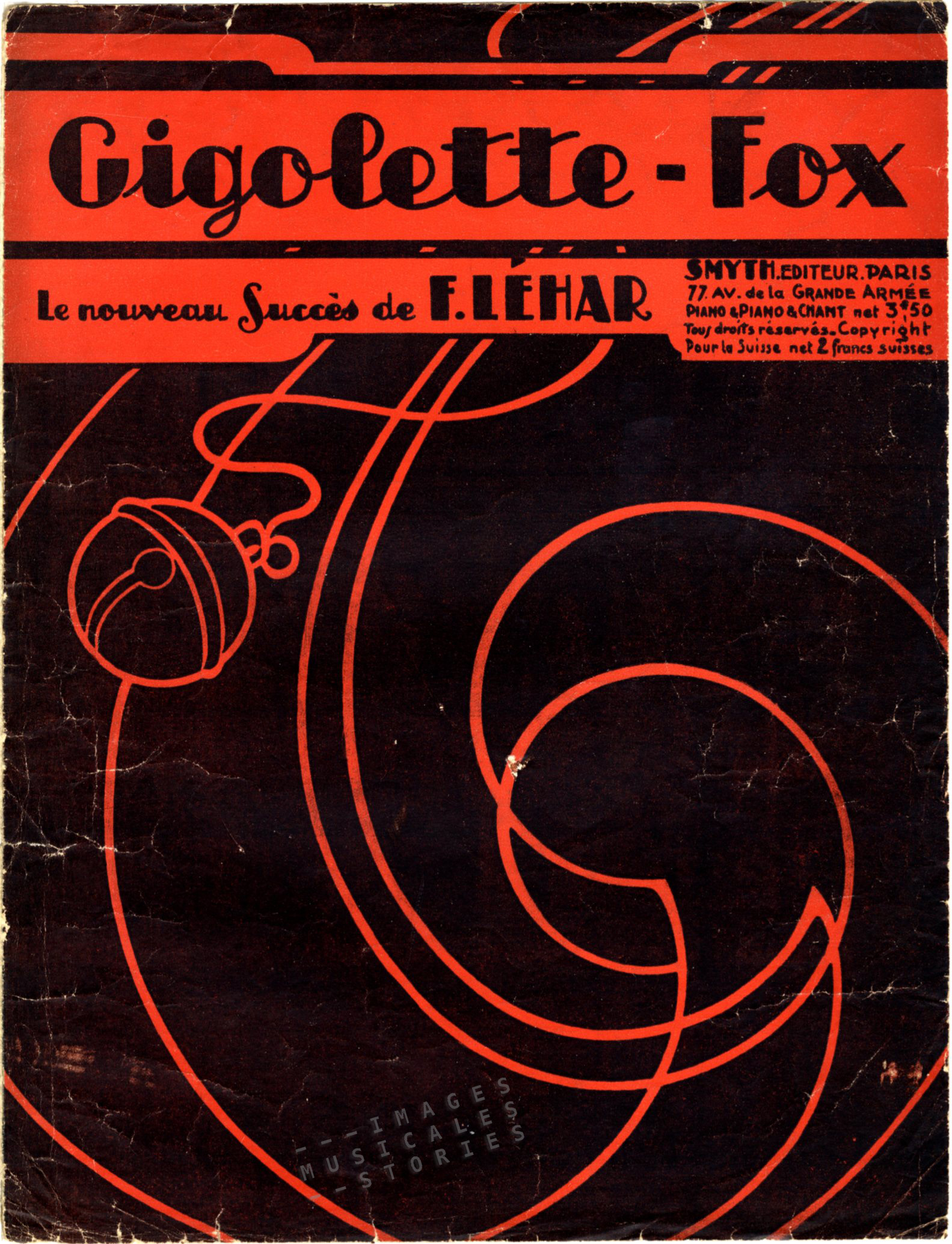
It took awhile before I pinpointed this cover in the haystack of our collection. It is a drawing for the Gigolette-Fox in Franz Léhars opérette La danza delle libellule from 1922. The image, a thick spiralling red line on a black background, had been lingering in the back of my mind since I saw Das Triadisch Ballet. Or better said, the video of that ballet produced by the Bavaria Atelier in 1977. I saw this baffling dance piece in the exhibition Paul Klee – Pictures in Motion in Bern. Happily it is also on YouTube and we’ve extracted the one-minute ‘spiral scene’.
The ballet is a major work of Oskar Schlemmer, who was a German painter, sculptor and choreographer, and also a member of Bauhaus (a school and modernistic movement in Weimar, Dessau and Berlin between 1909 and 1933). In it he presents “his ideas of choreographed geometry, man as dancer, transformed by costume, moving in space”. It is no wonder that the ‘figurines’ (the name he used for the extravagant costumes that abstracted the form of the human body into artificial and geometrical forms) were exhibited at the Société des Arts Decoratifs in Paris, in 1930.
Now, rewind to 1922 and the success of Franz Léhars Gigolette-Fox. We found French, Italian, and Portuguese covers of it in our sheet music collection, which proves the success of the operetta and its Gigolette theme.
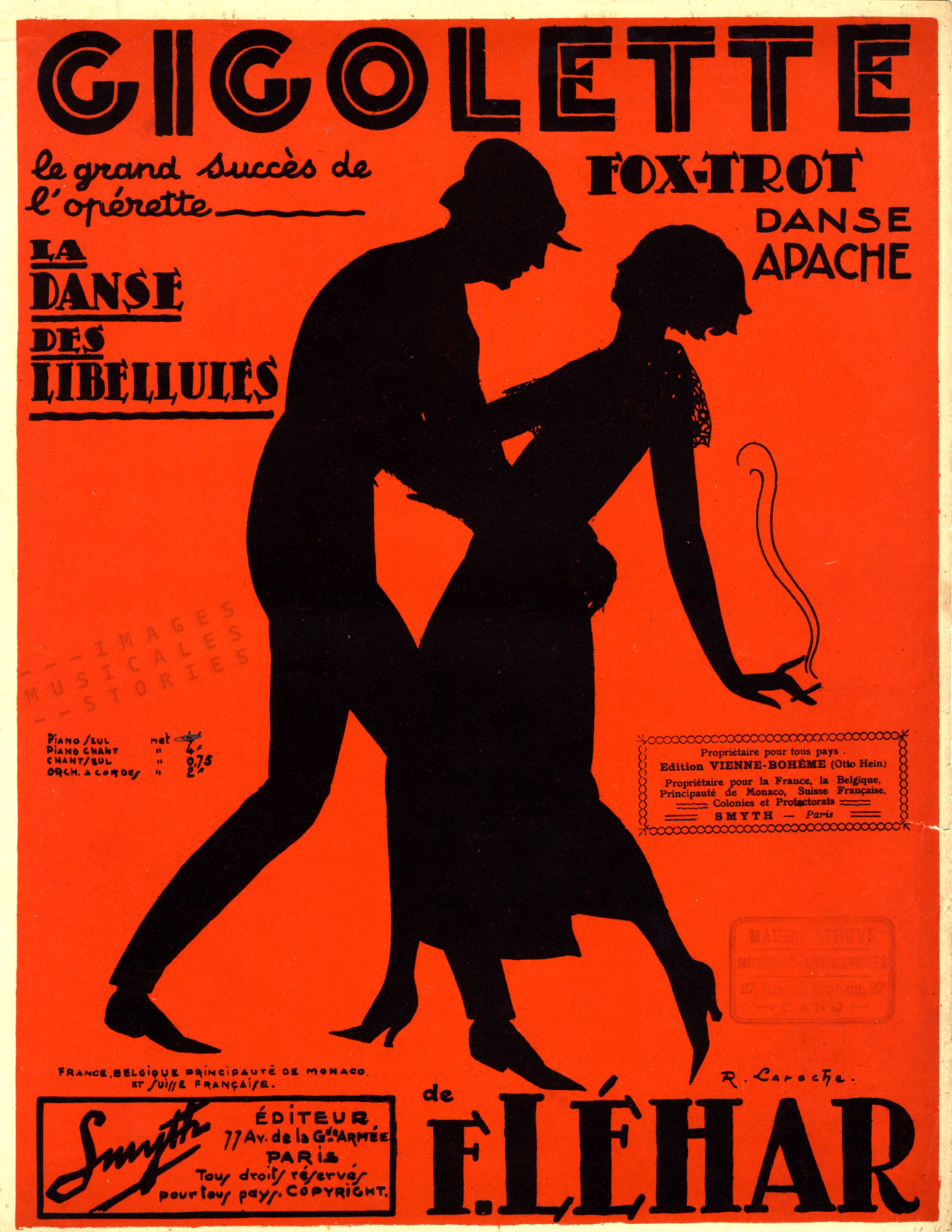
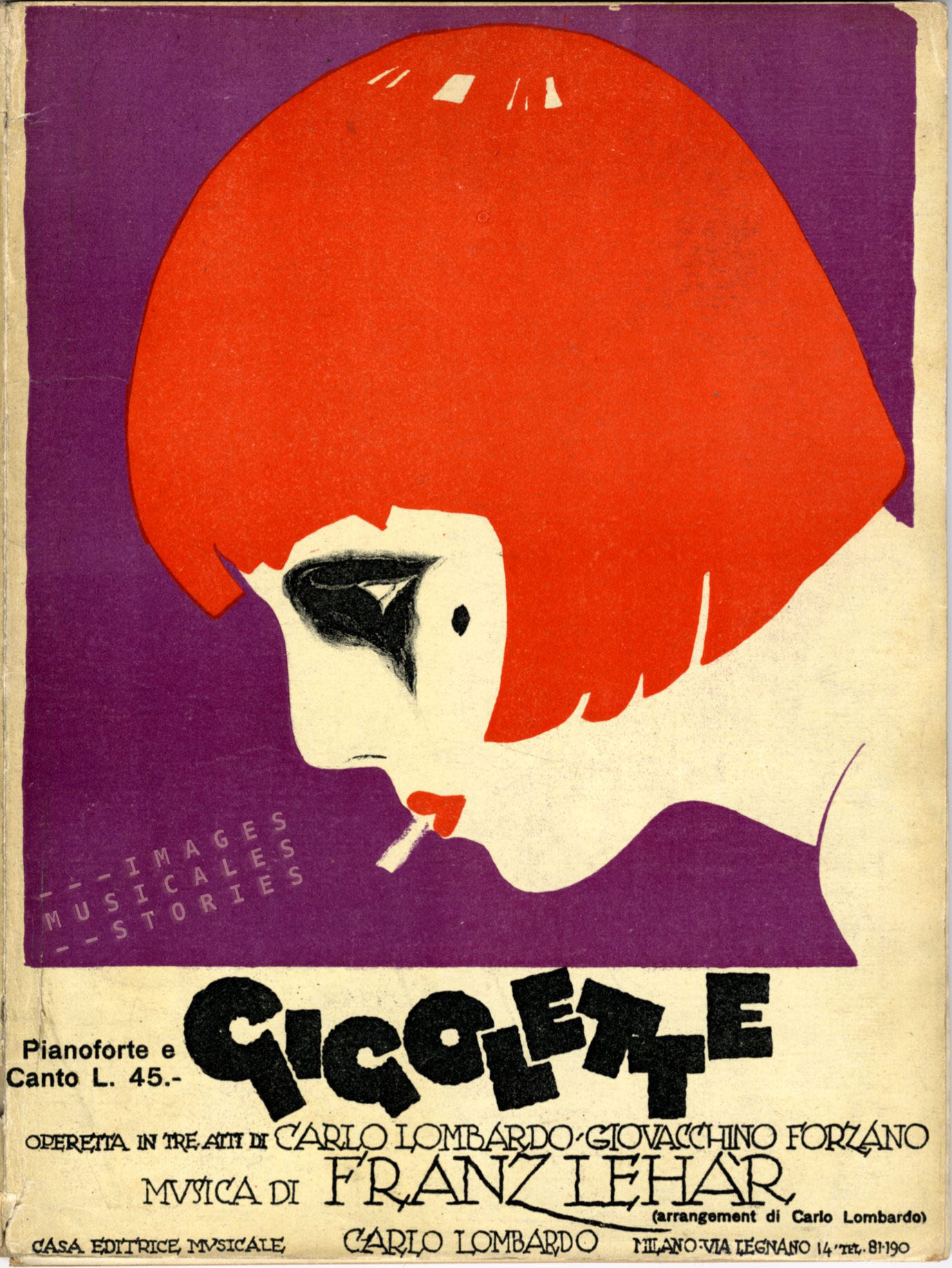
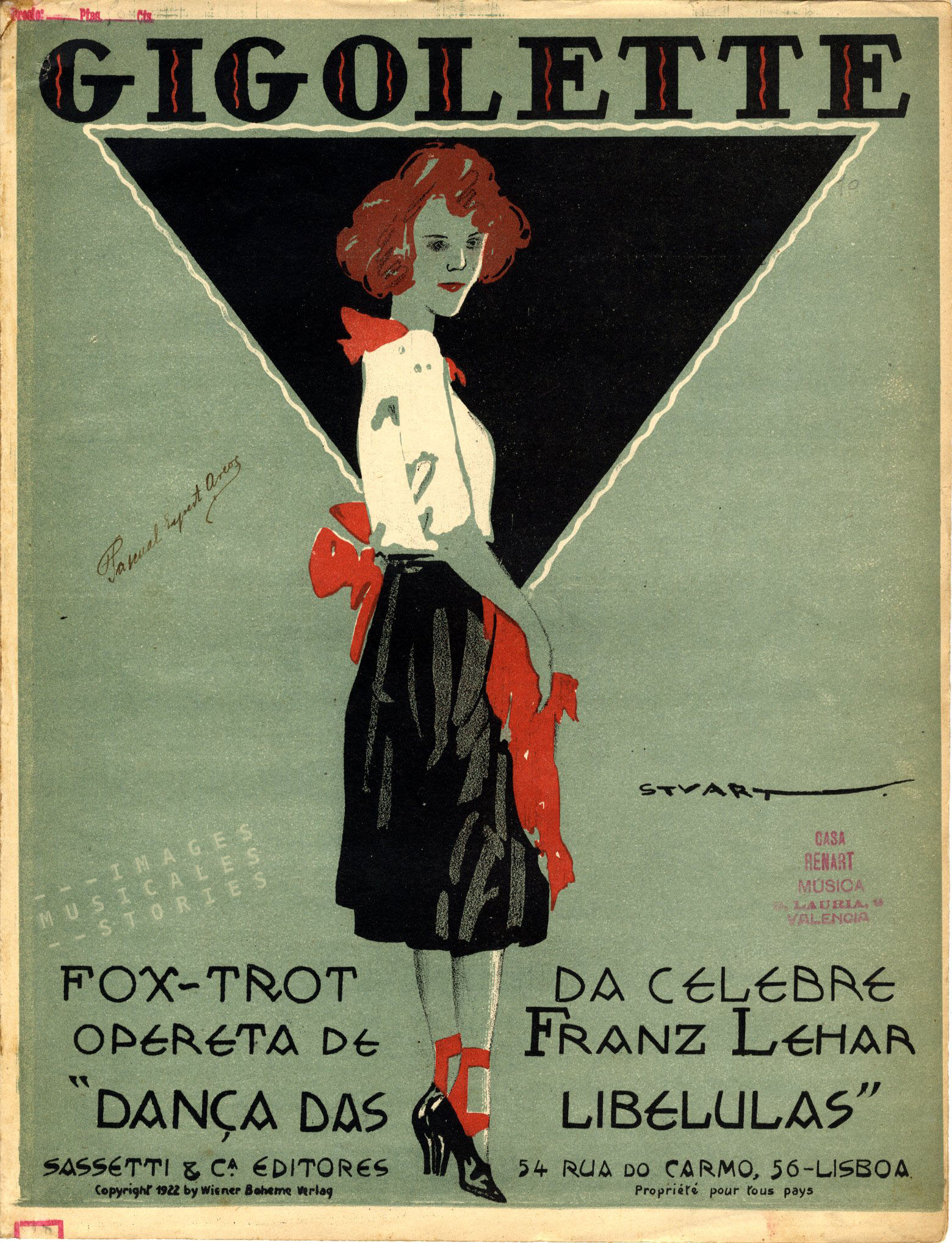
The Gigolette in Léhars operetta refers to a liberated girl, a flapper who isn’t afraid of a little amorous adventure… No wonder that the ‘Danse des Libellules’ was also produced by Madame Rasimi of the Ba-Ta-Clan: the perfect story to show lavish costumes and nudity at the same time. My Larousse explains gigolette as a ‘jeune femme délurée’ (a young smart/brazen/cheeky woman). One might think it is the feminine form for gigolo, but that term seems to be more recent.
Thirty years earlier, at the fin de siècle and start of the Belle Epoque, the gigolette was the female equivalent of that romanticised and proud male rascal, a member of the urban criminal canaille: the Apache. As in: I will be your Apache, will you be my Gigolette? But we’ll discuss the phenomenon of the Parisian Apaches in another story soon…
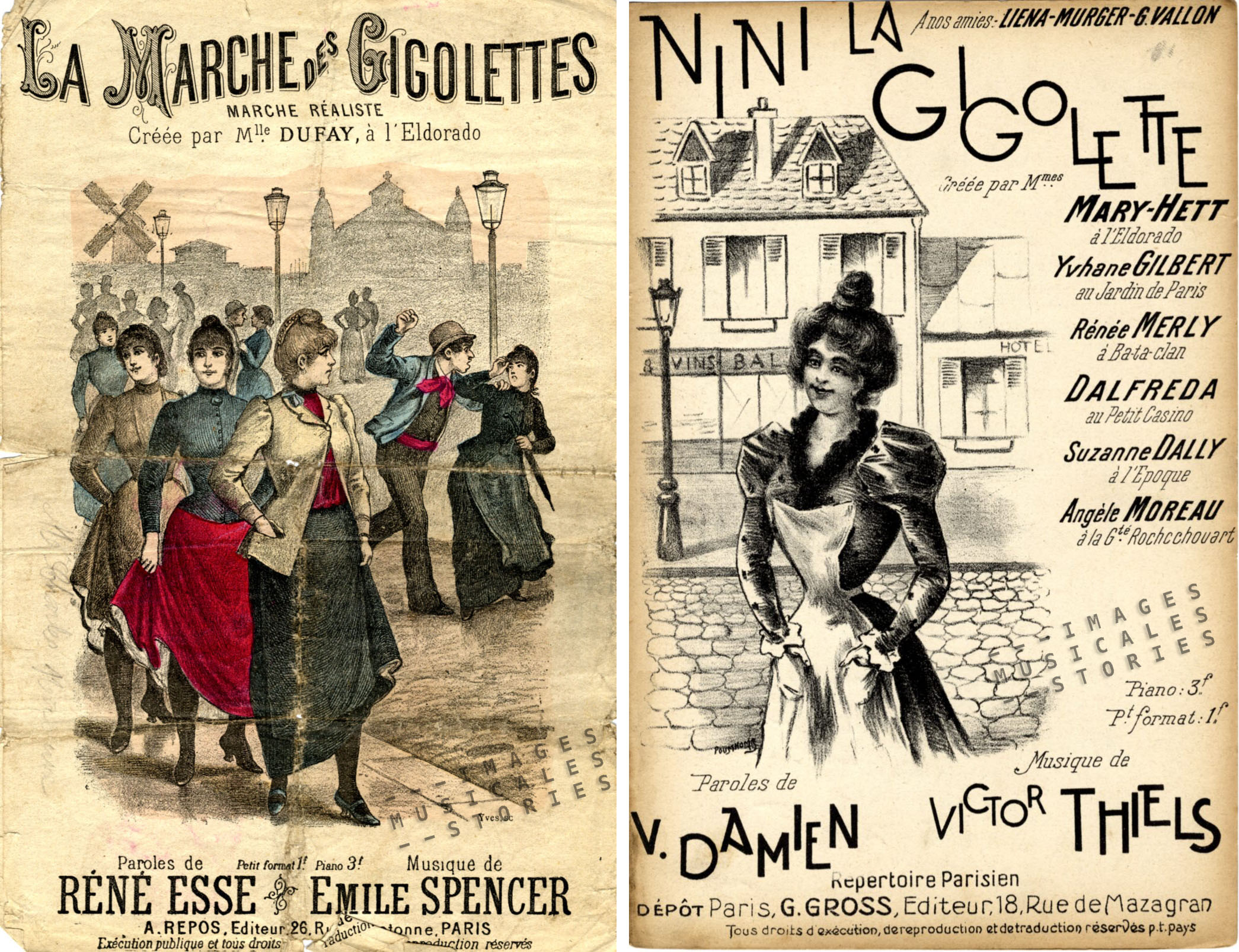
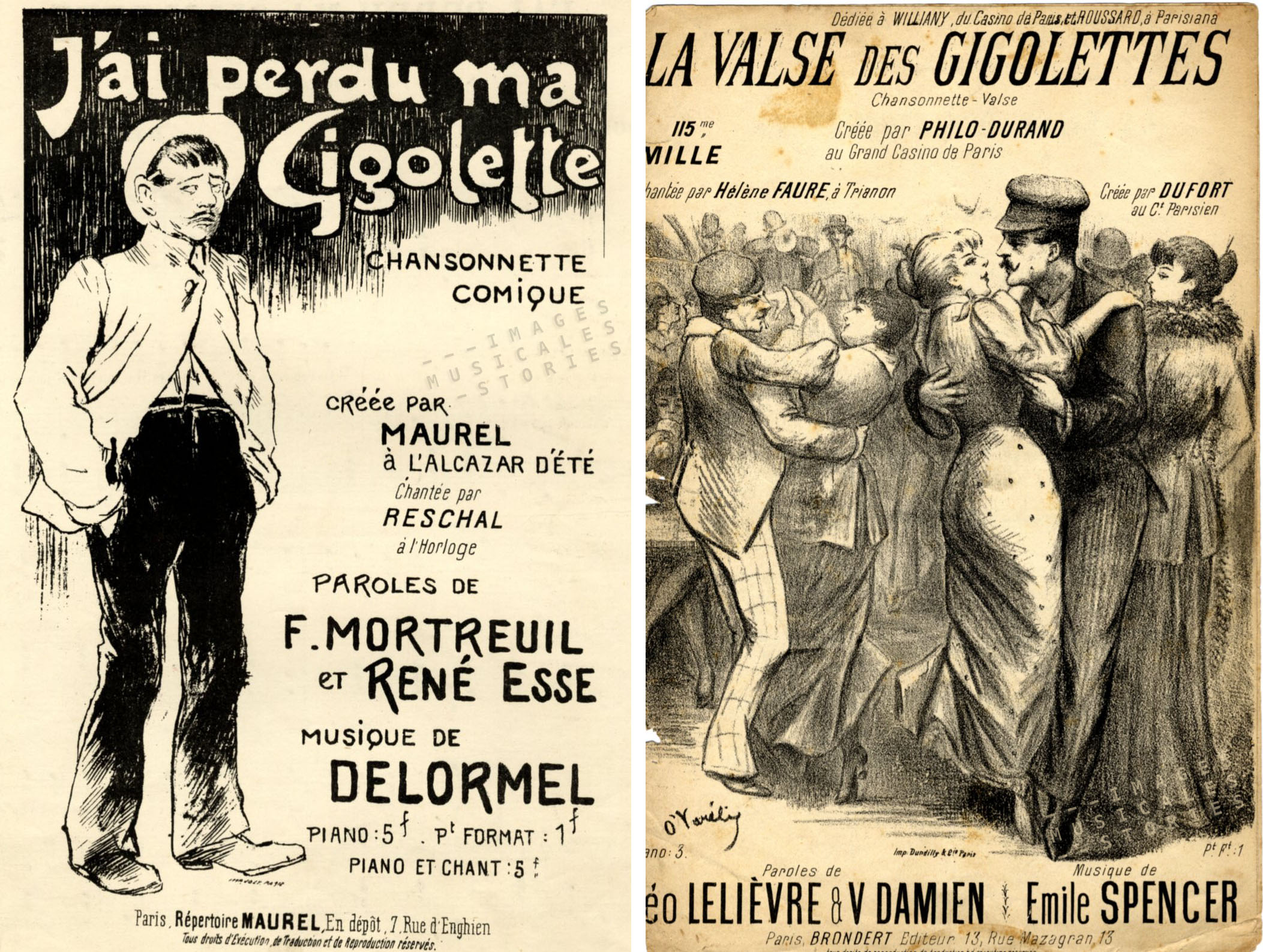

Beste Frank, alle mooie plaatjes weer opgeslagen. Heb jij deze bladmuziek ook werkelijk in jouw bezit ?